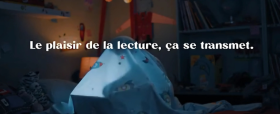La chronique de Mark Tungate: Newspapers consider the next page
When people talk about “the death of print”, newspapers are often at the forefront of their minds. And right now, several conflicting trends are indicating possible ways forward for the legacy press. Newspapers are in the headlines in Hollywood, where the film Spotlight – about the The Boston Globe’s investigation unit – won the Best Picture Oscar. With its scenes of cluttered desks and reporters scribbling in notebooks, the film is suffused with a nostalgia for old-fashioned journalism. But old-fashioned journalism took a hit in the UK recently when The Independent announced that it would become “digital only” from March. Founded in 1986, by January this year the newspaper’s circulation had fallen to 55,000 from its 1990 peak of 400,000. By the way, in 1998 The Independent also ran a much-admired TV ad, by Lowe London: It doesn’t take an investigative reporter to work out that the “Indy”, as it’s known, has been a victim of the digital revolution. But the landscape is still shifting. Having migrated from print to online, news consumption is now moving from online to mobile. The Reuters Digital News Report 2015 said “sales of printed newspapers have continued to fall in most countries”, while news accessed from smartphones “has jumped significantly…particularly in the UK, US, and Japan…Two-thirds of smartphone users (66%) are now using the devices for news every week.” See the full report here. The “social news” phenomenon is also growing, with younger audiences finding and sharing news via Facebook, WhatsApp, Instagram and other platforms. This has given rise to the theory of the “filter bubble”, in which younger people only see the news that conforms to their own political leanings and general view of the world. However, research conducted by the American Press Institute last year suggested that, in the US at least, this is not the case. In fact, within a group of more than 1,000 18-to-34-year-olds, 85% said keeping up with the news was “somewhat important to them”, while 86% believed that they “usually see diverse opinions through social media”. Media brands are now waging a battle for audience share on several fronts. Legacy newspapers with a digital presence, such as The New York Times, The Guardian and Le Monde, must compete with newer “digital born” entrants like Huffington Post and Buzzfeed. TV advertising may help to remind newspaper readers what they love about their favourite media brand. Here’s a beautiful spot by Grey London for the culture section of The Sunday Times: Meanwhile, this is how Huffington Post UK attracted the attention of Londoners, via a campaign from Gravity Road: If millennials are “stumbling over” news articles on third party social platforms, where does that leave print advertising? Newspapers are combating falling ad revenue with higher cover prices, subscription drives and apps. Another option is “native advertising” – or sponsored content. Why let your staff of journalists – skilled storytellers, after all – squander their talents on merely keeping the public informed? But let’s not sound the death knell for newspapers just yet. Not everyone in the world has access to a smartphone, or even a computer. According to the World Association of Newspapers and News Publishers, print circulation is sinking in the west, but rising in the east. Over the five years to 2015 print sales fell by 8.8% in North America, 21.3% in Europe and 22.3% in Australia and Oceania. But they rose 32.7% in Asia (largely driven by India), 3.7% in the Middle East and Africa and around 3% in Latin America. Just as books have recently regained ground against e-readers, it may be that newspapers are still appreciated by some for their tactile and finite qualities. Even in the UK, a new newspaper recently hit the stands. The New Day – which will not have a website – has an upbeat tone and is said to be aimed at older and female readers, as well as those who feel battered by information overload. Editor Alison Phillips said: “The idea is that this paper should give you in 40 pages everything on any given day in a 30-minute read, without being bombarded with content you don’t need.” The launch came with a cheerful TV ad: It may not be The Boston Globe, but in its own way it’s quite a risky venture.



